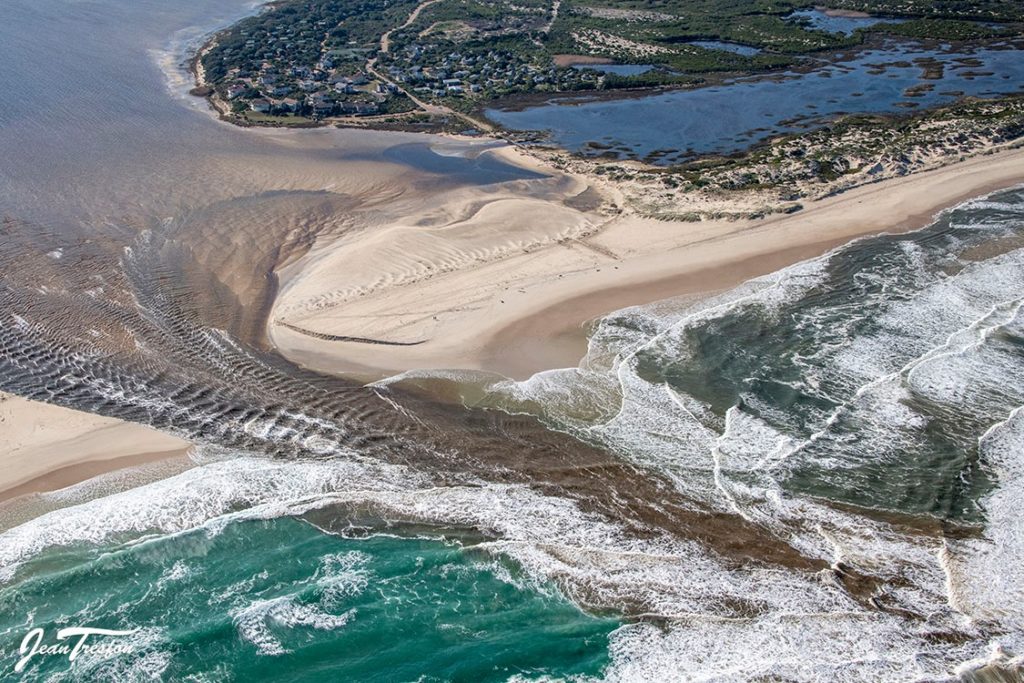
Bot River estuary breached, artificially. Very good rains, above average in June followed by good rains in July have filled the estuary to 2.9m above sea level. This still left 600-700mm to go before the estuary would breach naturally this year. The estuary has been closed for 5 years and a well compacted high bank of sand had built up. Only very high tides have flown over, which added very little water to the estuary.
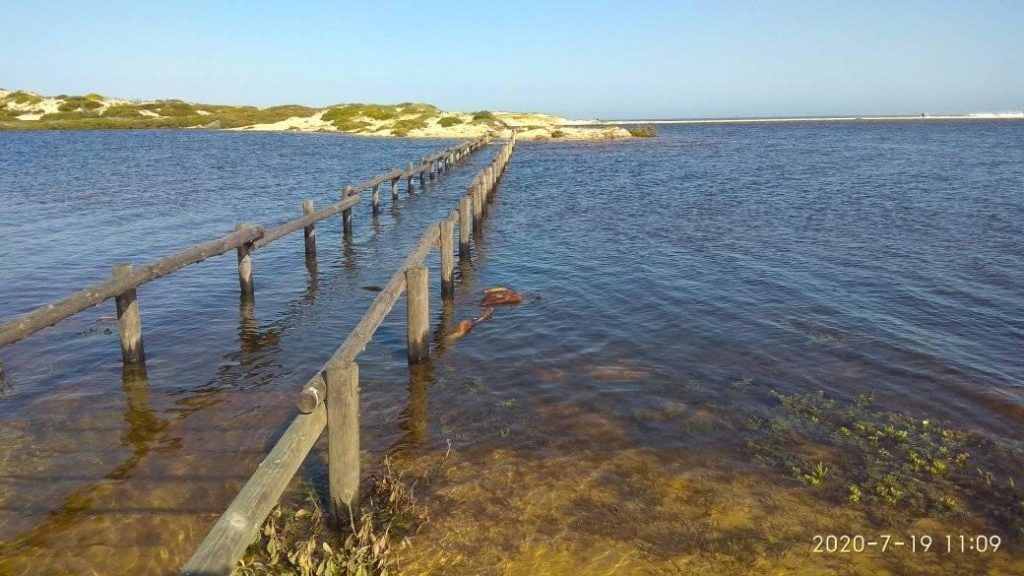
The estuary was still filling up by 100-140mm per day from fresh water. The previous week the estuary had filled more than a metre in six days. The more the estuary filled up, the stronger the flow became through Lamloch swamps to the Kleinmond estuary. The Kleinmond estuary then breached naturally on the 18 July 2020. The flow through to Kleinmond is a slow movement of water, over a long distance, through dense reeds, and only when the Bot Estuary is high.

The water level in the Bot was still rising the day after the Kleinmond breach but it had slowed. On 21 July, two days later, the water level was still the same. The flow from the Bot to Kleinmond was increasing. The breaching committee started opening the Bot on the 21st July because they decided the level of the Bot estuary may begin to drop if no further rains occurred.

By the evening the estuary was open, at high tide and had began to flow to the sea. Click to view the short video. Close Facebook page to return to website.
Below is a screenshot of the video, water starting to flow.
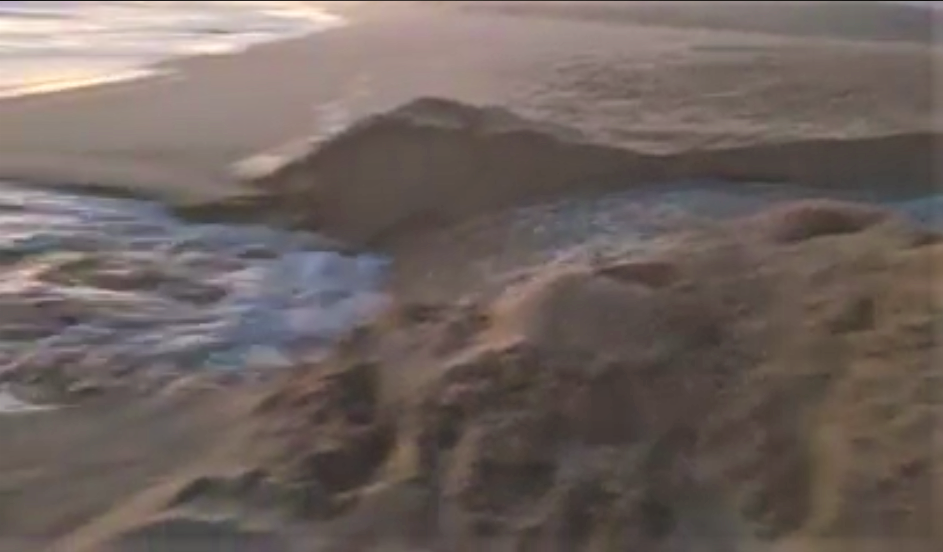
By the morning, 22 July 2020, the level of the Bot had significantly reduced and there was a very strong flow (click to view) out to sea. That is nearly three metres of water scouring out the sand to sea level.
Below is a screenshot of the video, dune getting washed out.
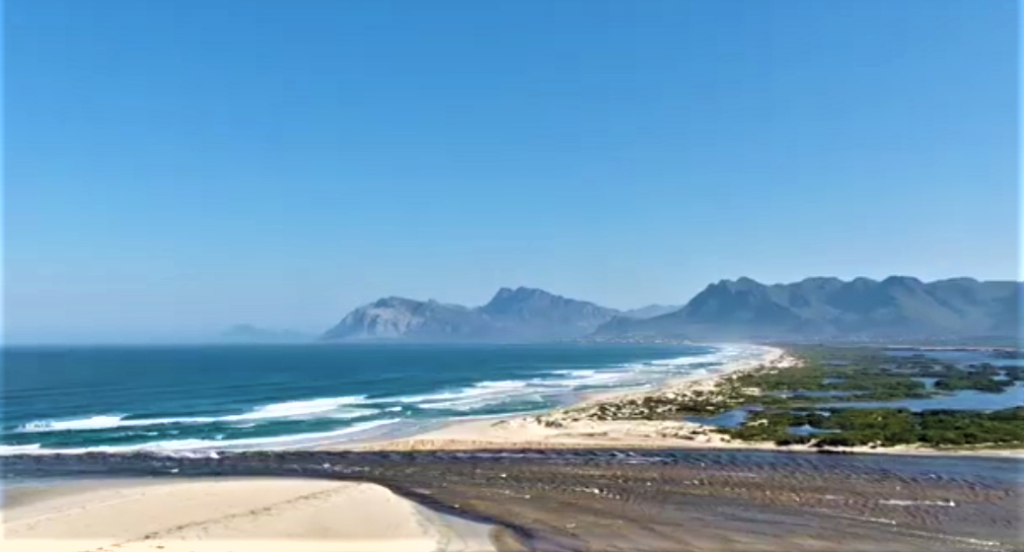
The breach of the estuary was done close to the large dune and steadily expanded in width through the dune. This is also the naturally deepest part of the estuary. By the evening of the first day most of the dune was gone. Most of the estuary water had flooded out and the high tide was washing significant amounts of sea water into the estuary.
Some great aerial pictures were taken by Jean Tresfon, on 22 July, showing the estuary washing well out to sea. This was scouring the accumulated silt out of the estuary.


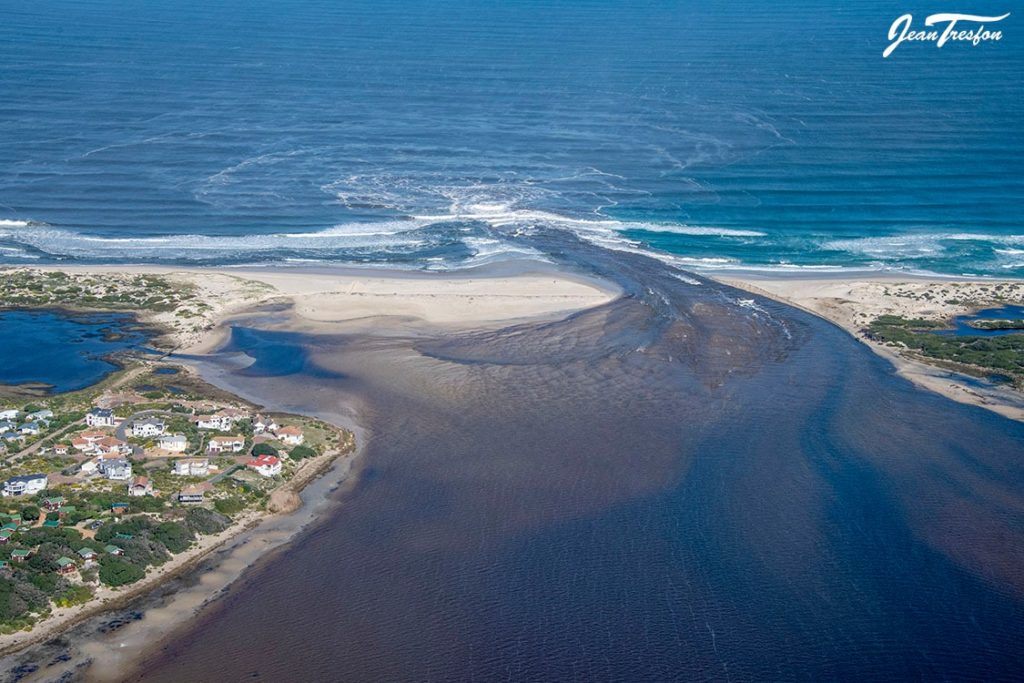
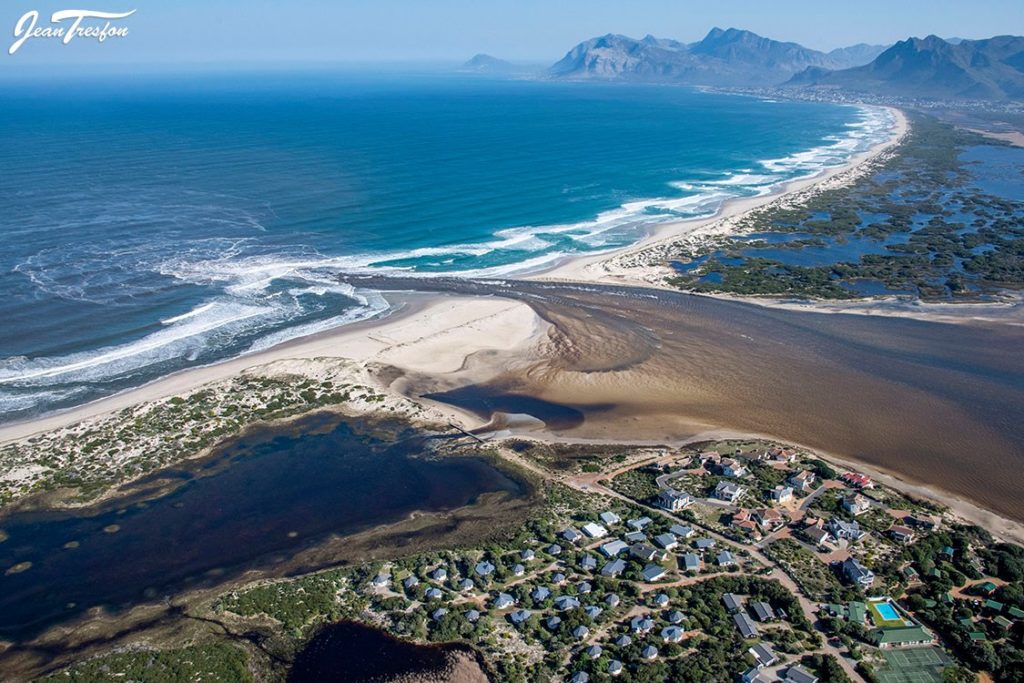
Note the strongest flow is to the west of the actual breach, removing the large sand dune.
Here is a video link from day 4 after the breach. The sand dune is gone altogether and the opening is much wider. At high tide the waves are washing into the estuary, eroding the opening wider and forcing huge amount of sea water into the estuary. The amount of sea water entering the estuary at high tide far exceeds the input of fresh water from the rivers. When the tide turns, all this water has to exit the estuary again, washing out more sand and silt.
Click on the image below to view the waves washing huge volumes of water into the estuary.

The estuary has settled down, at low tide the flow is strongly to the sea, about 40metres wide about an average of 700mm deep with in excess of 36000 cubic metres of water per hour flooding out.
An interesting point of note is that the high tide is still eroding part of the vegetated sand to the west (Lamloch swamp side), this is been spread to the east and then taken out to sea at low tide with a new bank of 600-700 mm developing.
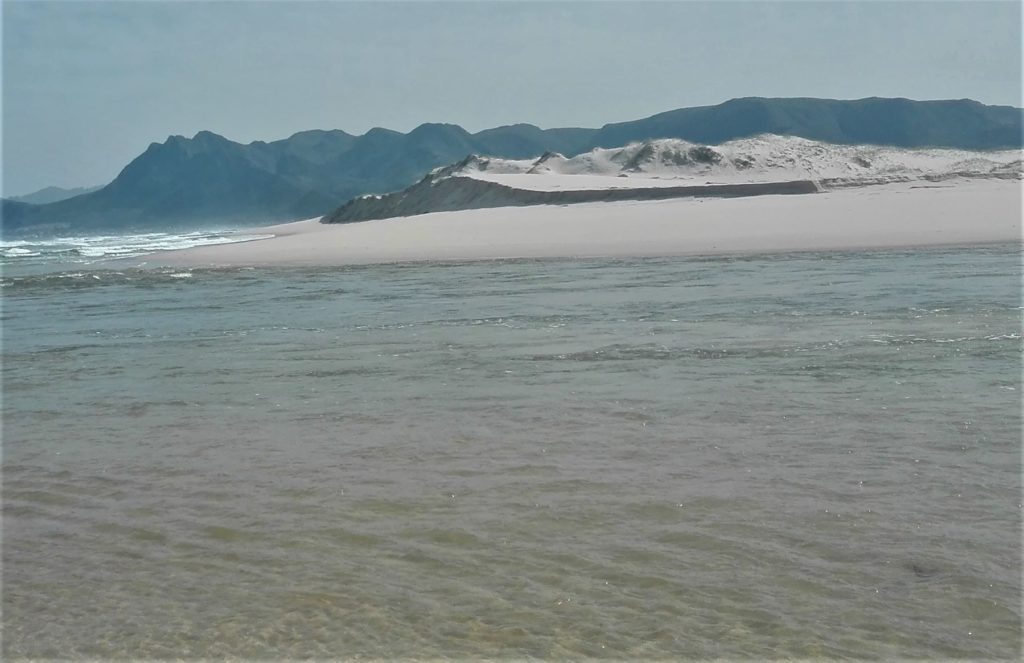
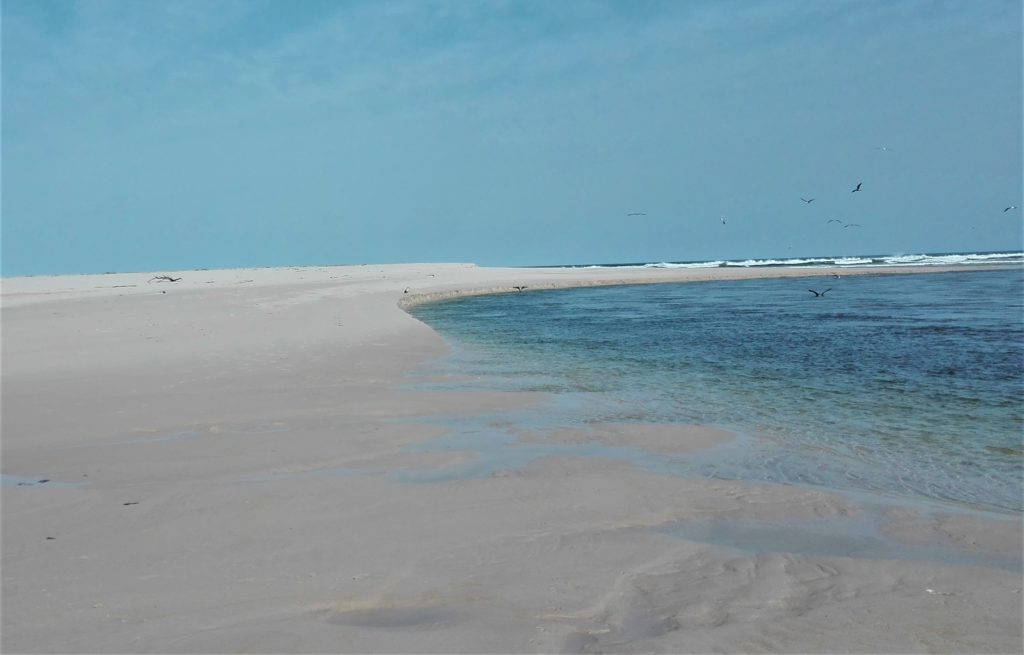
There is still much debate about the management of ecosystems such as the Bot River Estuary. The problem is that the human species has modified all ecosystems of the entire planet. All plant and animal species have effects on their ecosystems. However, these are usually small and remain within the natural variation of the delicate balance established by nature, over thousands of years. The influence of changes which humans are now making are greater than the natural variation. We are making huge changes too quickly for nature to adapt. Humans are therefore, tipping nature out of balance. This is resulting in climate change, a much less stable system, which runs the risk of tipping into a very new system to which we may not be able to adapt to quickly enough.
We therefore, need to clearly determine what we want from natural systems such as the estuary.
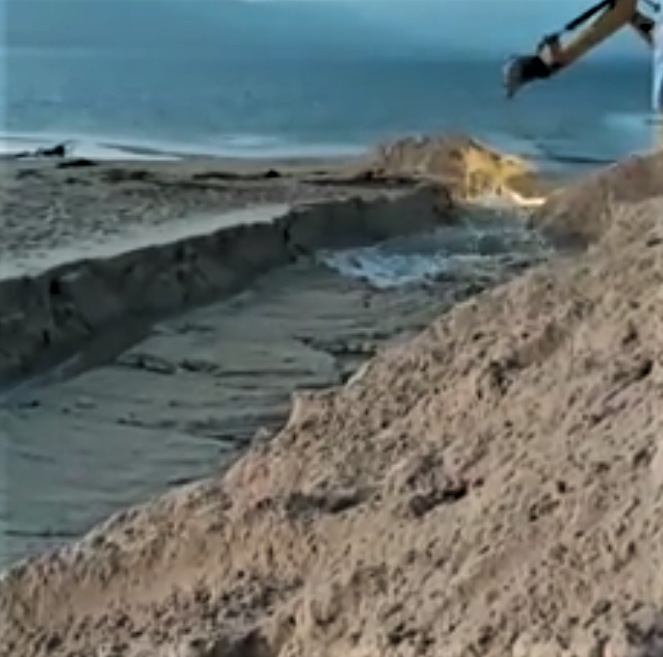
We cannot return it to what it was hundreds of years ago when humans lived in harmony with nature and our influence was within the delicate balance of nature.
Most of the time we can still work with nature and minimise the influence we have on the environment. We do have to manage natural systems in order to achieve this and by working with nature, we let nature do most of the work for us.
The major change we have made to the estuary is the amount of fresh water flowing into the estuary has been significantly reduced, mainly by extraction from the Bot River for agriculture.
Secondly we have very much changed the flow patterns in the Bot River. Dams have reduced flood flows, erosion has increased flood flows but reduced retention flows, climate change has reduced water inputs, alien plant invasion has reduced retention and flood flows and pollution has reduced flood flows. The disruption of the balance of the estuary has reduced sea inflows.
A major effect on the biodiversity within the whole estuary is the sudden reduction in water level by 3 metres and the huge change in salinity from an almost fresh water system to saline sea water almost overnight. The flora and fauna takes a couple of years to adapt, at which time the estuary is then closed again and the whole estuary is tending back towards a fresh water system. Just as the flora and fauna has adapted to a fresh water system it then breaches again and overnight becomes a saline system again.
In the upper reaches of the Bot and Afdaks rivers the system tends to remain a fresh water system, without ever becoming saline. The sudden reduction of water level from a breach leaves mud exposed for hundreds of metres, this dry’s out rapidly and most of the flora and fauna does not get a chance to move with the sudden change in the waters edge.
This affects even the fish and the birds, as their food supply has been severely disrupted. This is quite different from a system that has adapted to a constant yearly cycle of dry and wet. These are usually constantly saline or fresh water systems, with only small changes through the year.

Recent Comments